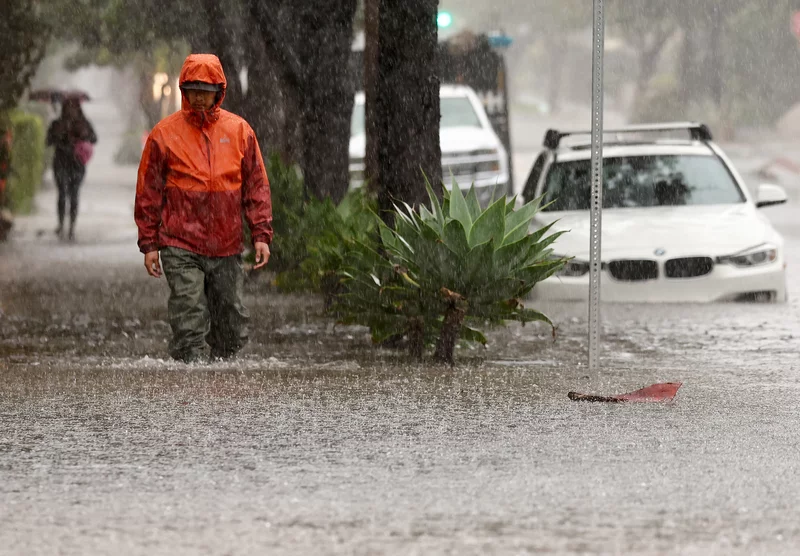2024 is off to a wet start, with parts of Southern California receiving historic levels of rainfall this January and February.
North students may have noted the unusually rainy weather this season, starting in late January, when a series of storms swept across California, leading to San Diego seeing their wettest day yet in January (NWS San Diego). In early February, Southern California suffered more severe storms from an atmospheric river event that resulted in the deaths of at least 9 people, widespread power outages, and devastating damages to property. This phenomena, where long columns of flowing water vapor in the atmosphere deposit large amounts of water all at once, can result in dangerous flash floods and mudslides. Governor Newsom declared a state of emergency on February 4 for 8 affected counties, including Riverside, San Bernardino, and LA (NBC News).
According to CNN, at least 9 people were killed in the storm, and the weather forecast agency Accuweather estimates that there could be up to 11 billion dollars in economic damages.
The rainy pattern continued into late February, where storms continued to drench the SoCal region, with NWS Los Angeles tweeting that this was the 4th wettest February on record for the downtown Los Angeles region.
Though atmospheric rivers are naturally occurring phenomena, Daniel Swain, a climate scientist at UCLA, told NPR that “the intensity of recent atmospheric rivers is almost certainly affected by human-caused climate change”, suggesting that the severe flooding could be attributed to the current climate change crisis.
On a more positive note, the winter rainy season has helped to replenish both surface and groundwater supplies for California. Based on data from the California Department of Water Resources, practically all of the state’s major supply reservoirs are above their historical averages. Furthermore, the Sierra Nevada snowpack, a vital water source, shot up from only about 28% of the historical average on January 1st to 85% on February 23rd. Scientists hope that the snowpack can continue to increase in size by April 1st, putting our water supply in a good spot when the snow begins to melt.
More storms are expected to arrive in March, so remember to check the forecast and keep your umbrellas at hand.











